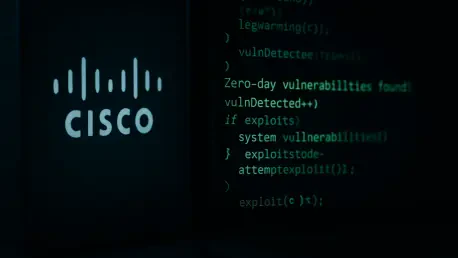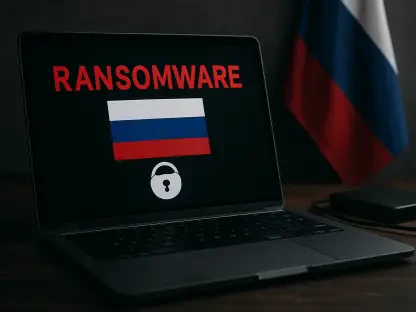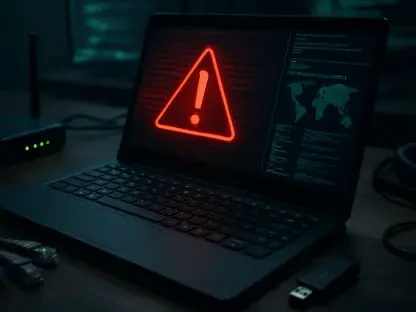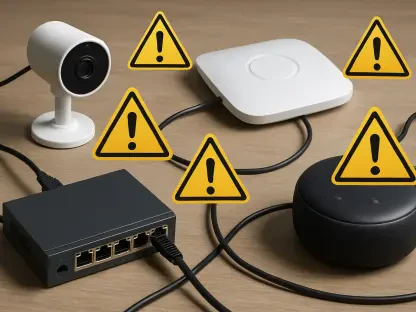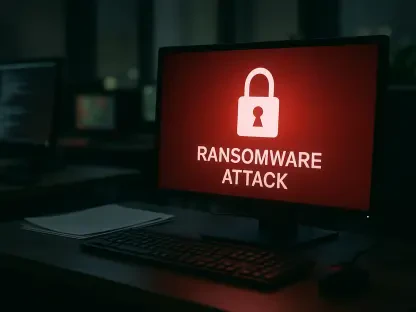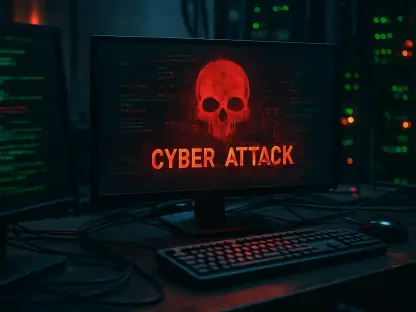Setting the Stage for a Critical Cybersecurity Challenge
Imagine a global network infrastructure, relied upon by enterprises and governments alike, suddenly becoming a gateway for sophisticated cyber espionage due to vulnerabilities in a cornerstone of modern networking like Cisco. This scenario is not hypothetical but a stark reality as Cisco faces a barrage of zero-day vulnerabilities actively exploited by state-sponsored threat actors. These flaws, targeting essential devices like Adaptive Security Appliances (ASA) and Firepower models, expose millions of systems to severe risks, including unauthorized access and data theft. The urgency of this issue cannot be overstated, as compromises have already been detected in critical sectors, raising alarms across the cybersecurity community. This review delves into the technical intricacies of these vulnerabilities, evaluates Cisco’s response, and assesses the broader implications for network security in an era of escalating cyber threats.
Technical Breakdown of the Vulnerabilities
Critical Exploits and Their Impact
At the heart of this crisis are high-severity flaws, notably remote code execution (RCE) vulnerabilities with critical CVSS scores. These bugs allow attackers to gain unauthorized access and execute malicious code with root privileges, effectively taking full control of compromised devices. The potential for widespread damage is immense, as such exploits can disrupt operations, steal sensitive data, or serve as entry points for deeper network infiltration. Affected systems span a broad range of Cisco’s portfolio, amplifying the scope of this threat across industries.
Beyond the immediate impact, the mechanisms behind these exploits reveal a chilling level of sophistication. Attackers can manipulate system components to bypass standard security measures, rendering traditional defenses inadequate. This level of access not only jeopardizes individual devices but also threatens the integrity of entire network architectures, highlighting a pressing need for robust mitigation strategies.
Additional Threats from Privilege Escalation and Denial of Service
Complementing the RCE flaws are medium-severity vulnerabilities that enable privilege escalation and denial-of-service (DoS) attacks. These bugs, though less critical in scoring, pose significant risks by allowing attackers to elevate their access rights and disrupt system availability. Such capabilities can be leveraged to maintain long-term persistence within networks, creating backdoors for future exploitation.
Particularly concerning is the exploitation of specific protocols, which can be abused to manipulate system configurations or overload resources. These tactics often go undetected for extended periods, as they do not always trigger immediate alarms. The cumulative effect of such vulnerabilities underscores the multifaceted nature of the threat, requiring a layered approach to defense that addresses both immediate exploits and latent risks.
Performance Under Attack: Threat Actors and Tactics
The adversaries exploiting these vulnerabilities are no ordinary hackers but a state-sponsored Advanced Persistent Threat (APT) group linked to a known cyberespionage campaign. Their tactics demonstrate an advanced understanding of Cisco’s architecture, employing techniques like read-only memory manipulation to ensure persistence even through system reboots or upgrades. Such methods indicate a strategic focus on long-term access rather than short-term disruption.
Further escalating the threat is the deployment of custom malware designed for data exfiltration and sustained control. These tools are crafted to evade detection, blending into normal system operations while siphoning off critical information. Reports of compromises in federal agencies underscore the high stakes involved, as these attacks target entities with vast repositories of sensitive data.
The scale of this campaign is staggering, with potentially millions of devices worldwide at risk. The combination of sophisticated tactics and the sheer number of affected systems paints a picture of a well-orchestrated operation aimed at exploiting Cisco’s pervasive presence in global networks. This reality challenges the resilience of even the most fortified infrastructures.
Scope of Affected Systems and Operational Challenges
Cisco’s affected lineup includes a wide array of devices critical to network operations, such as the ASA 5500-X series firewalls, select Firepower appliances, and systems running IOS or IOS XE software like the Meraki MS390 and Catalyst 9300 Series Switches. The diversity of impacted hardware reflects the extensive reach of Cisco’s technology, touching nearly every corner of enterprise and government environments.
A complicating factor is the prevalence of end-of-life devices within this pool. Many organizations continue to rely on outdated models no longer supported with security updates, creating a significant barrier to effective remediation. Cisco has urged upgrades to supported versions, but operational dependencies often delay such transitions, leaving systems exposed.
The global footprint of vulnerable devices adds another layer of complexity. With estimates suggesting millions of units at risk, the task of identifying, patching, or replacing affected systems becomes a monumental undertaking. This widespread exposure transforms a technical issue into a strategic challenge for cybersecurity teams worldwide.
Cisco’s Response and Mitigation Effectiveness
In response to this crisis, Cisco has issued urgent advisories alongside tools to help organizations identify and patch vulnerable configurations. Recommendations include immediate software updates and temporary workarounds, such as disabling certain features prone to exploitation. These measures aim to close critical gaps while more permanent solutions are implemented.
Government agencies have also stepped in with mandates to accelerate remediation efforts. Emergency directives emphasize the need to disconnect unsupported devices and apply patches within strict timelines, reflecting the gravity of the situation. Such actions signal a collaborative push to contain the threat before further damage occurs.
However, practical barriers persist in applying these fixes. Many organizations face operational constraints that hinder timely patching, such as the need to maintain uninterrupted service or the complexity of managing large-scale networks. Expert opinions highlight that while Cisco’s guidance is comprehensive, the real-world execution of these strategies often falls short due to resource limitations and competing priorities.
Broader Implications for Network Security
The vulnerabilities in Cisco’s ecosystem reveal deeper systemic issues within network infrastructure security. As a dominant player, Cisco’s devices often sit at critical junctures of data flow, making them prime targets for adversaries seeking high-value access. This positioning, combined with shared code across platforms, creates a ripple effect where a single flaw can impact diverse systems.
Internet-facing interfaces on many Cisco devices further exacerbate the risk, offering attackers direct entry points without the need for an initial network breach. This exposure, often a result of configuration oversights, amplifies the potential for mass exploitation by both nation-state actors and cybercriminals. The current wave of attacks serves as a stark reminder of these inherent vulnerabilities.
Ultimately, the situation underscores a “perfect storm” of challenges: legacy systems, delayed patching cycles, and increasingly sophisticated threats. Addressing this requires not just technical fixes but a cultural shift toward proactive security practices. The stakes are high, as failure to adapt could erode trust in foundational technologies that underpin modern connectivity.
Looking Ahead: Lessons and Future Directions
Reflecting on this wave of Cisco zero-day vulnerabilities, it has become evident that the sophistication of state-sponsored attacks has reached new heights, testing the limits of existing defenses. The active exploitation by APT groups has exposed critical weaknesses in widely deployed networking gear, leaving organizations scrambling to respond. The scale of affected systems, coupled with the persistence of outdated hardware, has painted a sobering picture of the cybersecurity landscape.
Moving forward, organizations must prioritize rapid deployment of patches and upgrades, leveraging tools provided by Cisco to streamline the process. Beyond immediate fixes, a renewed focus on cybersecurity hygiene—such as minimizing internet exposure of critical interfaces—has emerged as a vital step. Collaborative efforts between industry and government have also proven essential in sharing threat intelligence to preempt future exploits.
Long-term, the industry needs to invest in resilient design principles and faster update mechanisms to stay ahead of evolving threats. Trust in Cisco’s infrastructure, though shaken by these incidents, can be rebuilt through transparent communication and enhanced security protocols. The path ahead demands vigilance and innovation, ensuring that lessons from this crisis shape a more secure digital future.
